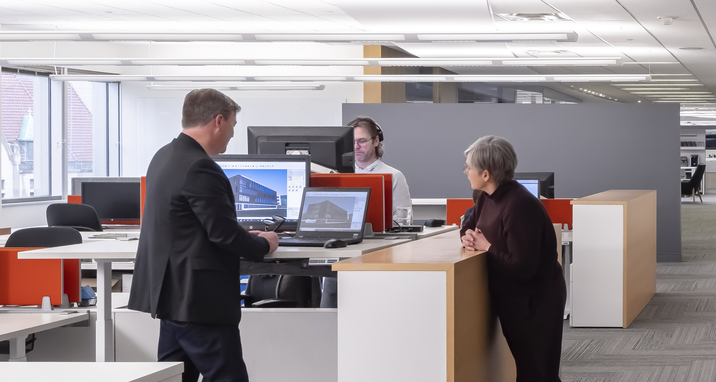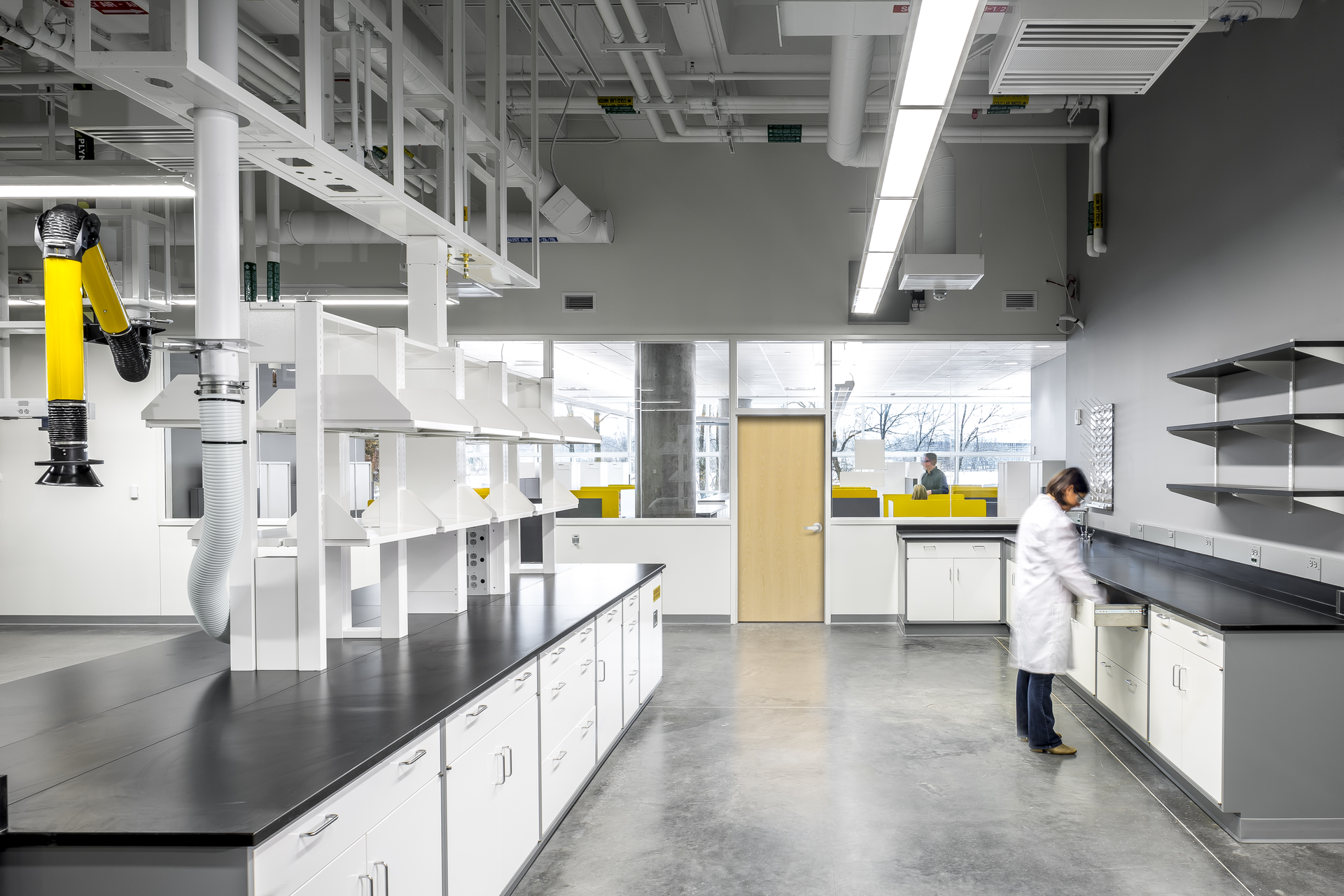You’ve heard the phrase “too many cooks in the kitchen spoils the broth.” Do too many stakeholders in the planning room spoil the design? That depends on how you approach the challenge.
For this episode of our Side of Design podcast, host Matt Gerstner sat down with Principal Stephanie McDaniel, AIA, LEED® AP, as well as Senior Project Planner Nate Roisen, AIA. The topic: consensus building.
First off, what is consensus building? Stephanie explains it as a way to build agreement on a direction. Doing so is “not all rainbows and unicorns,” she says. “In an effort to build consensus, it’s really important that we dive into all the hard stuff, ask the hard questions, share multiple options, and really make sure that we’re embracing and building consensus early and thoroughly.”
Nate emphasizes the need for a common vision, which is not always easy when you have lots of stakeholders and people responsible for creating a final design. “In order to gather everybody around a single endpoint, that idea of vision is something that is just incredibly important to establish upfront,” he says.
Building the Foundation
A lot of passion, energy, and strong opinions go into designs. It’s understandable that things could get tricky when balancing all the client’s wishes with realities like budget and building codes. Nate says that one key is to develop multiple options. “For me, it’s about doing the work of showing everyone that we’ve really investigated a number of different ways of going at a particular issue, problem, or solution.” That means not just brainstorming, but also testing and reconfiguring — all before attempting to finalize with the client.
In other words, you don’t simply show up with one idea and hope that everyone agrees. The team works to make sure that everyone involved can trust that the designers have done their homework before bringing options to the table. That helps make it easier to coalesce around an idea and address challenges. It’s common for a stakeholder to suggest an idea that may not be suitable, but when trust has been established, the BWBR team can say “I see what you’re saying, but we explored that option and here’s why it’s not the optimal approach.”
Of course, as Nate points out, “Building that level of trust can only happen if we are really, truly doing our homework behind the scenes — and we are.”
While multiple choices are optimal, sometimes there’s really only one viable option. Still, Nate emphasizes the importance of making sure all parties understand why other alternatives don’t work. And it’s still important to come up with variations and make sure the designers aren’t overlooking an important perspective.
Amplifying All Voices
Digging in further to how we work to fully understand the client perspective, Matt asked how the team makes sure that varying viewpoints are heard and considered in these planning meetings. “That’s a great question, and it relates closely to our equity work,” says Stephanie. She explains that it comes down to listening intently, understanding the power dynamics in the room, and making sure that if voices are missing, BWBR brings them into the conversation.
The stakes are high. “The consequences of not hearing every voice can be really detrimental to a project,” she says. “There could be a mistake because a viewpoint has been missed. If we catch it later on in the design process, that means backtracking, which creates extra work for everyone involved.”
To make sure all perspectives are heard early on in the process, Stephanie says the BWBR team will often establish ground rules so everyone understands how to create a psychologically safe space for the conversation. That also involves the individuals on the BWBR team practicing self-awareness and actively avoiding any individual biases.
Equity work at BWBR has been integral to the success of consensus building, with Nate noting the clear advantages that come from incorporating a diverse range of viewpoints.
Creating Buy-In
A clear upside of consensus building is that it facilitates buy-in from all parties. That means that everyone feels heard and is committed to the vision. Not only does this make the entire process go more smoothly, but it also creates a shared sense of enthusiasm for a project that is an exciting part of design.
Even if everyone’s first choice was not incorporated into the final design, the consensus building process helps make sure that all parties at least understand why the decisions were made. “Buildings are inherently very complex,” says Nate. “There are so many considerations, including building codes, constructability, cost, performance, beauty. Being clear on the ‘why’ behind decisions means you’re more likely to agree with those decisions.”
Both Nate and Stephanie point out that empathy is an important part of consensus building and creating buy-in. It can be frustrating when your idea isn’t chosen, and practicing empathy along with clear and honest communication can go a long way toward improving the experience.
A Consensus-Building Caveat
To be clear, consensus building doesn’t mean a fully democratic approach. As Stephanie says, “democracy does not yield good design.”
Nate recalls a scenario where a key member of an organization was unable to attend a meeting to select a design concept. Although those in attendance came to a consensus, the team was nervous when it came time to present the options to the leader. “We developed an idea of what people wanted in that first meeting, and it would have caused a few problems if the leader had chosen something completely at odds,” he explains.
When the leader chose the idea the others had selected, there was a sigh of relief from the design team, but the client wondered if the quick consensus was a negative — a sign of groupthink. “It was a really powerful example because you can have consensus that’s rooted in something that is unhealthy, which is, ‘This is what I think my boss is going to like,’” says Nate.
The two also point out that while it’s important to hear all viewpoints and take them into consideration, the truth is that not every idea can — or should — be included. Elements like building codes and, often, budgets, are immobile.
The trick — and it’s as much art as it is science — is to listen with the intent to truly understand, invite and amplify all voices and perspectives, and facilitate a productive discussion that fits those myriad lenses within the constraints of the project. It’s a true skill, and one built over time and experience.
As always, this recap barely scratches the surface of the vibrant conversation. You aren’t going to want to miss this one, so don’t forget to listen to the full podcast for more thoughtful insights.








